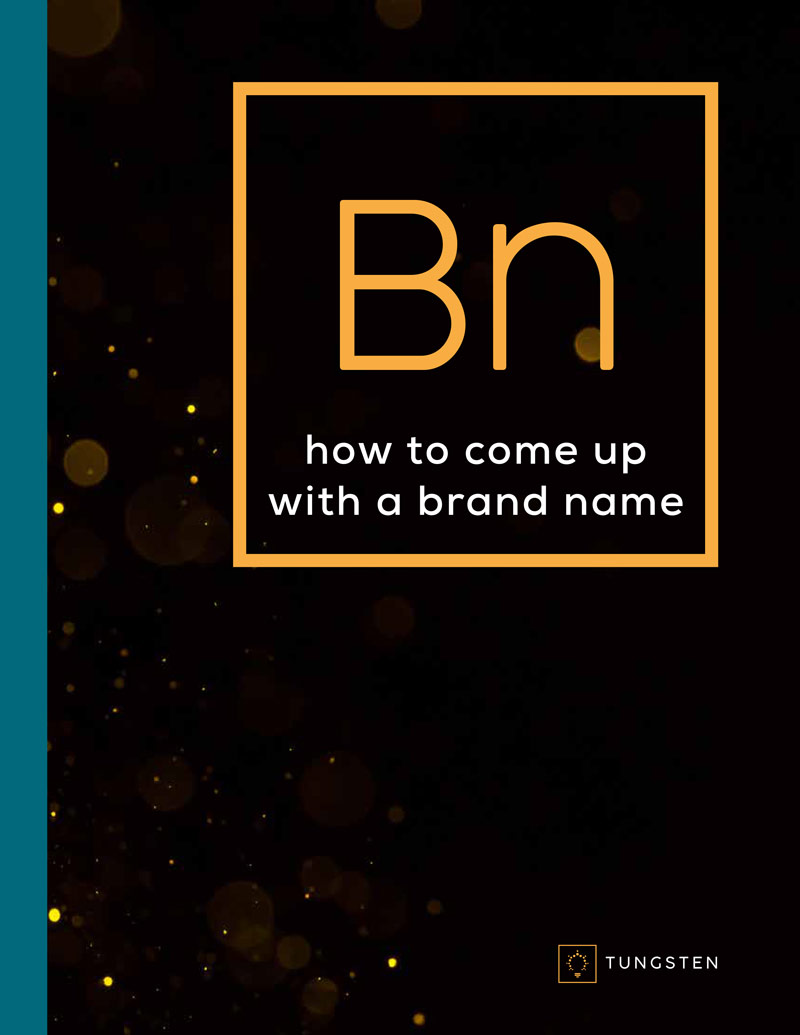Step 1: Determine your primary pain point(s)
Before embarking on any company branding process, identify your true drivers. Is there a trademark conflict? Is your company name too common sounding, literal or descriptive? Is your brand geographically limited in name? Do you want your business name to match your domain name? Do you have a trade show coming up and simply want a name that passes the sniff test — one that sounds like a “real” company? Write out as many issues as possible to get a clear picture of what’s pushing your buttons.
Defining your objectives will clarify your thinking and help you to evaluate your branding priorities. Sure you have a trade show in a month, but is that deadline more important than having a coherent, compelling brand identity? And lots of names will get you out of trademark trouble, (just reach into a Scrabble bag) but that doesn’t mean they will grow your business. List the issues you want addressed in your company branding process, the boxes you want ticked off, but also gage their overall importance so they don’t take over.
Step 2: Determine your team
Once you have a firm grasp of the top issues you need to address, assemble the team you want involved to help address them. Look for individuals that understand your goals and mission, and can contribute meaningful input and feedback. The company branding process is not a democratic one, especially for startups, entrepreneurs and growing companies. It’s about vision and leadership, and that comes from the heart of the owner, founder and upper management team. It’s vital to have a small team that can delve deeply into the project and “gets it.” A camel is a horse made by committee so keep the group tight, focused and on track. You will involve others later, but at this stage keep with those who share the company vision. We advise three to five final decision makers at most, and odd numbers work best.
If you have a financial backer who insists on being involved, then be clear he or she must attend all creative meetings. Do not give blanket veto power to anyone who doesn’t fully participate. Otherwise you can go through a six week process only to have someone throw a wet blanket on the deal because they were never brought along to understand the group’s thinking.
Step 3: Determine your brand criteria
Now that you know what the issues are, and the team members who will assist you, take a big picture or long range view of your brand. You know what you are trying to avoid or overcome (e.g. that nagging trademark issue, that lack of clarity, the difficult pronunciation, the lack of domain name, etc.) Now it’s time to get out your wish list. What is it that you want from your company branding process that will most benefit your company over the long haul? Here are some examples of company branding criteria, qualities that you want your new company identity to possess.
Memorable – a business name that has “white space” around it and is unique in your industry, one that stands out and makes a statement
Scalable – a company identity that is more open and expansive, one based on timeless attributes or capabilities that are not limited to products or geography, a name that can grow
Compelling – a name that creates interest or intrigue, one that engages potential customers and gets them to ask for more, a name that communicates your core value proposition
Authentic – a name that speaks to your core purpose and values, a name that reflects your motivation or heritage as a company
Evocative – A name that makes an emotional connection, pulls on the heartstrings, touches customers on a visceral level and moves them to action
Multi-Dimensional – A brand that has depth behind the name and lends itself to a story and a platform, a name that is based on a metaphor, a picture that paints a thousand words
These are just a few examples of the type of qualities that a strong brand can offer. Develop your own list and then add in your “must haves” such as matching .com domain, trademark availability, easy pronunciation, etc. This way you have the best of both worlds, names that work to communicate your brand message while also overcoming functional hurdles that need to be addressed but shouldn’t drive the branding process. Most importantly put this criteria in order of importance.
Here is a set of branding criteria for an imaginary startup IT company:
- Should sound innovative and leading edge
- Should sound robust, capable and dependable
- Must allow for future growth and expansion
- Must not contain any time dated words like computer or hosting
- Must be easy to pronounce and spell
- Must have available .com but can have the words systems or consulting at the end
- Must have available ™ in the US
Step 4: Determine if this is an inside job or if you need outside expertise
Now that you have your team and your objectives, you’re ready to go to work. Creating a new company name or rebranding an existing business takes creativity, time, and good old fashioned tenacity. Experienced naming firms can shorten that timeline and assist in your company branding process by helping you with your brand criteria, timelines, name generation, research and project management. They can also share various naming strategies that will accomplish your brand messaging goals, e.g. positive connotation names, metaphors, coined/invented names, evocative names, etc. That way you will have a choice of methods and options in achieving your brand outcome.
If you go it alone, map out the milestones in the company branding process, delegate who is doing what to avoid endless brainstorming sessions and duplication of efforts, and enlist the services of a trademark attorney to vet your top ideas. Make sure you evaluate each of your naming candidates based on your pre-agreed branding criteria and not on personal bias (e.g. I just don’t like that one, it sounds like this weird kid I knew in college or a drug company.)
Step 5: Choose the winning candidate and implement the brand
Whether you conduct your company branding process internally or externally, you will reach the decision point. Practice saying each name as if you were introducing yourself and the company by the new name. Pick the winner by choosing the name that most easily segues from the brand name and into a deeper conversation about the actual company. You may have two to three top names, and if that’s the case, trademark availability will often be the tie breaker. The final phase is implementation including items such as…
- Securing the matching or closely matching .com
- Creating a matching corporate logo design
- Creating matching collateral materials
- Devise a roll out strategy for both internal and external audiences (e.g. press release, internal employee launch, newsletter, customer luncheons, etc.)
- Rollout of the new website
Be sure to inform your staff and top customers first so no one is taken by surprise. Let this be an opportunity to speak about your company’s growth and advancement, and position the new company name as a positive catalyst so that everyone is on the same page. Typically name changes unleash pent up energy in a company as they are instructive and indicate the direction of the business. This allows everyone to get on board and pull together.
Summary
Every company branding process is unique, with its own set of challenges, but by following these five proven strategies, you can avoid common pitfalls and ensure a more structured process that will deliver a solid result. By identifying, and separating, urgent marketing deadlines from key company brand attributes, you will ensure your new company brand identity communicates your core value proposition. Having a trusted inner circle to help guide the decision will prove priceless. And knowing your brand criteria, your “recipe” that makes you unique, will guide and inform the actual naming and brainstorming sessions, whether you conduct them internally or hire an outside firm. Taking all these steps will ensure a smoother, more cohesive brand implementation, one that will resonate with staff and customers alike.
BY Phil Davis
Brand Naming Expert
With over twenty-five years of company naming and branding expertise, Tungsten founder Phil Davis is a marketing and advertising veteran, having personally named over 250 companies, products and services worldwide. As a sought-after naming expert, Phil has been quoted in The Wall Street Journal, Inc.com, Businessweek, Entrepreneur, and Newsday.




